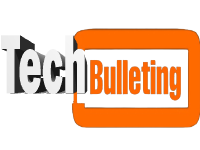News
Zola Hospice Fraud: Unveiling the Dark Side of Compassionate Care
Published
2 months agoon
By
Ahmad khan
Introduction
Imagine trusting a hospice care provider with the well-being of your loved one, only to find out that they were exploiting this trust for financial gain. This nightmare became a reality with the Zola Hospice fraud case. This scandal highlights not just a failure in one organization but a broader vulnerability in the healthcare system designed to offer compassionate end-of-life care. Addressing fraud is crucial to ensuring that such services remain a source of comfort rather than exploitation.
Understanding Hospice Care
Definition and Purpose of Hospice Care
Hospice care is specialized care designed to provide comfort and support to patients in the final stages of a terminal illness. The primary goal is to enhance the quality of life, focusing on palliative care rather than curative treatment. services include pain management, emotional support, and assistance with daily activities, catering to both patients and their families.
The Compassionate Intent Behind Hospice Services
The essence of hospice care lies in its compassionate approach. It aims to honor the dignity of patients by offering holistic support that addresses physical, emotional, and spiritual needs. This ethos of care ensures that patients can spend their final days with comfort and respect, surrounded by their loved ones.
The Emergence of Hospice Fraud
What Constitutes Hospice Fraud?
fraud occurs when providers manipulate services and billing practices for financial gain, often at the expense of patient care. This can include overbilling for services, falsifying patient records, and enrolling ineligible patients into programs. Such fraudulent activities not only drain healthcare resources but also undermine the integrity of care.
Historical Context and Rise in Fraudulent Activities
fraud is not a new phenomenon. Over the years, the increasing reliance on services and the complexities of healthcare billing have created opportunities for fraudulent activities. The rise in reported cases underscores a growing problem that demands systemic intervention and oversight.
Zola Hospice: A Case Study
Background of Zola Hospice
Zola Hospice was once a respected name in care, known for its comprehensive services and compassionate approach. It garnered a strong reputation, becoming a trusted provider for families seeking end-of-life care for their loved ones.
Initial Reputation and Service Offerings
Initially, Zola Hospice offered a range of services, including pain management, counseling, and support for families. Its team of healthcare professionals was praised for their dedication and empathetic care, establishing Zola as a leader in the industry.
Uncovering the Fraud
Whistleblower Revelations
The unraveling of Zola fraudulent activities began with brave whistleblowers who stepped forward to expose the misconduct. These individuals, often employees within the organization, provided crucial information that revealed the extent of the fraud.
Investigative Journalism and Its Role
Investigative journalists played a significant role in bringing the Zola fraud to light. Through meticulous research and reporting, they uncovered the deceptive practices, sparking public outrage and prompting legal investigations.
Methods of Fraud Employed by Zola Hospice
Falsifying Patient Records
One of the primary methods of fraud employed by Zola was the falsification of patient records. This involved altering medical records to make it appear as though patients required more intensive care than they actually did, thereby inflating billing amounts.
Billing for Unprovided Services
Another fraudulent practice was billing for services that were never provided. Zola would charge for treatments, medications, and visits that patients never received, significantly boosting their revenue at the expense of ethical care.
Misrepresenting Patient Eligibility
Zola also engaged in misrepresenting patient eligibility. By enrolling patients who did not meet the criteria for care, they could claim higher reimbursements from insurance companies and government programs.
Impact on Patients and Families
Emotional and Psychological Effects
The fraud perpetrated by Zola had profound emotional and psychological effects on patients and their families. The betrayal of trust and the realization that their loved ones were exploited added immense stress and grief during an already difficult time.
Financial Repercussions
Beyond the emotional toll, there were significant financial repercussions. Families faced unexpected medical bills and insurance complications, further complicating their end-of-life planning and burdening them with additional financial stress.
Legal Actions and Consequences
Lawsuits and Penalties Faced by Zola Hospice
The exposure of the fraud led to numerous lawsuits against Zola . The organization faced hefty fines, legal penalties, and the loss of operating licenses, crippling their ability to continue functioning in the healthcare sector.
Governmental and Regulatory Responses
In response to the scandal, governmental bodies and regulatory agencies stepped in to tighten oversight and enforcement. New regulations and stricter penalties were introduced to prevent similar cases of fraud in the future, aiming to restore trust in care.
The Role of Whistleblowers
Importance of Whistleblowers in Uncovering Fraud
Whistleblowers are essential in the fight against healthcare fraud. Their willingness to come forward with information helps uncover deceitful practices that would otherwise remain hidden. Their courage ensures accountability and integrity within the healthcare system.
Protection and Support for Whistleblowers
To encourage whistleblowers, it is crucial to provide them with protection and support. Legal safeguards and anti-retaliation policies are necessary to ensure that these individuals can report fraud without fear of retribution, thus fostering a culture of transparency.
Regulatory Measures to Prevent Hospice Fraud
Existing Regulations
Currently, there are several regulations in place aimed at preventing fraud. These include thorough auditing processes, stringent eligibility criteria, and mandatory reporting requirements for providers.
Proposed Enhancements and Reforms
Despite existing measures, further reforms are needed to strengthen the system. Proposed enhancements include more frequent audits, higher penalties for fraudulent activities, and better training for healthcare providers on ethical practices.
Ethical Considerations in Hospice Care
Balancing Care Quality and Profitability
One of the significant challenges in care is balancing care quality with profitability. While financial viability is important, it should never come at the expense of patient care. Ethical considerations must be at the forefront of all services.
Ensuring Ethical Standards in Hospice Services
providers must adhere to strict ethical standards to ensure that they deliver the highest quality of care. This includes maintaining transparency in their operations, prioritizing patient well-being, and fostering a culture of integrity within their organizations.
The Responsibility of Healthcare Providers
Duty of Care Towards Patients
Healthcare providers have a duty of care towards their patients, which involves offering compassionate, ethical, and high-quality services. This duty extends beyond medical treatment to include emotional and psychological support for both patients and their families.
Maintaining Transparency and Accountability
Transparency and accountability are crucial in maintaining trust in care. Providers must be open about their practices, ensure accurate billing, and regularly evaluate their services to prevent any form of misconduct.
Educating the Public
Awareness Campaigns
Public awareness campaigns are vital in educating families about care and the potential risks of fraud. By informing the public, we can empower them to make informed decisions and recognize warning signs of fraudulent activities.
How to Identify Potential Hospice Fraud
Identifying hospice fraud can be challenging, but there are warning signs to look out for. These include unexpected charges, discrepancies in billing, lack of proper documentation, and unresponsive or evasive behavior from staff.
Steps to Take if You Suspect Hospice Fraud
Reporting Mechanisms
If you suspect hospice fraud, it is essential to report it promptly. Various mechanisms are in place for reporting, including hotlines, online complaint forms, and contacting regulatory agencies directly.
Legal and Support Resources Available
There are numerous legal and support resources available for those affected by hospice fraud. These include legal aid services, support groups, and counseling services to help navigate the complexities of dealing with fraud and its aftermath.
Conclusion
The Zola Hospice fraud case serves as a stark reminder of the vulnerabilities within our healthcare system, especially in areas designed to provide compassionate care. By addressing these issues head-on, we can ensure that hospice care remains a beacon of comfort and support during life’s most challenging times. It is imperative that we maintain vigilance, support whistleblowers, and enforce stringent regulations to protect the integrity of hospice services.
FAQs
What is hospice fraud?
Hospice fraud involves deceitful practices by hospice care providers to gain financial benefits, often through falsifying records, overbilling, or enrolling ineligible patients.
How can families protect themselves from hospice fraud?
Families can protect themselves by thoroughly researching hospice providers, monitoring billing statements for discrepancies, and staying informed about the services their loved ones receive.
What are the legal consequences of hospice fraud?
Legal consequences of hospice fraud can include hefty fines, lawsuits, loss of operating licenses, and potential criminal charges against those involved in fraudulent activities.
How do whistleblowers contribute to uncovering fraud?
Whistleblowers play a critical role by providing insider information that exposes fraudulent practices, helping to initiate investigations and bringing unethical actions to light.
What steps can be taken to improve hospice care quality?
Improving hospice care quality involves stricter regulations, frequent audits, better training for healthcare providers, and fostering a culture of transparency and ethical behavior within hospice organizations.
You may like
News
Slinguri: The Ultimate Guide to Sling Accessories
Published
3 weeks agoon
July 9, 2024By
Ahmad khan
Introduction
If you’re a firearm enthusiast or a seasoned shooter, you’ve probably heard of sling accessories, or as they are often referred to, Slinguri. These accessories are essential for anyone looking to enhance their shooting experience, providing increased mobility, comfort, and accessibility. But what exactly are sling accessories, and why are they so important?
Types of Sling Accessories
Sling Straps
Sling straps are Slinguri the most basic and essential type of sling accessory. They come in various forms to suit different needs and preferences.
Single-point Straps
Single-point straps attach to the Slinguri firearm at one point, typically near the stock. They offer great flexibility and are ideal for close-quarters combat situations. However, they might not be the best choice for long-term carry due to the lack of support.
Two-point Straps
Two-point straps attach to the firearm Slinguri at two points, usually at the stock and the barrel. This type of strap offers better stability and support, making it a popular choice for many shooters. It’s versatile and can be adjusted for various carrying styles.
Three-point Straps
Three-point straps provide an additional point Slinguri of attachment, which can offer even more stability and control. These are excellent for tactical situations where quick transitions and secure handling are crucial.
Sling Mounts
Mounts are another critical sling accessory Slinguri that allows you to attach the strap to your firearm securely.
Fixed Mounts
Fixed mounts provide a permanent point of attachment for your sling strap. They are sturdy and reliable, but they can Slinguri limit the flexibility of your setup.
Quick Detach Mounts
Quick detach mounts allow you to easily attach and detach your sling strap. This can be incredibly useful for situations Slinguri where you need to quickly adjust your setup or switch between different firearms.
Sling Swivels
Swivels are the connectors that link your Slinguri sling strap to the mounts on your firearm.
Push Button Swivels
Push button swivels are easy to use Slinguri and allow for quick attachment and detachment. They provide a secure connection and are a popular choice for many shooters.
Loop Swivels
Loop swivels offer a more traditional connection method. They are typically very durable and provide a reliable attachment point for your sling strap.
Sling Pads
Sling pads add an extra layer of comfort to your setup. They help distribute the weight of your firearm more evenly across your shoulder, reducing fatigue during long shooting sessions.
Sling Adjusters
Adjusters allow you to fine-tune the length and fit of your sling strap. This ensures that your setup is as comfortable and functional as possible.
Choosing the Right Sling Accessories
Consider Your Needs
When selecting sling accessories, the first step is to consider your specific needs. Are you looking for a setup for tactical situations, or do you need something more suited for long hunting trips?
Material and Durability
The material of your sling accessories is crucial. Look for high-quality materials like reinforced nylon or leather, which offer durability and longevity.
Comfort and Ergonomics
Comfort is key when carrying a firearm for extended periods. Look for sling accessories that offer padded straps and ergonomic designs to minimize discomfort.
Compatibility with Firearms
Ensure that the sling accessories you choose are compatible with your specific firearm. Check the manufacturer’s specifications to avoid any compatibility issues.
Installation and Maintenance of Sling Accessories
Installation Tips
Proper installation of your sling accessories is vital for their performance and your safety. Follow the manufacturer’s instructions carefully, and make sure all components are securely attached.
Maintenance Practices
Regular maintenance will ensure that your sling accessories remain in good condition. Check for any signs of wear and tear, and clean them as recommended by the manufacturer.
Popular Brands for Sling Accessories
Magpul
Magpul is a well-known brand that offers a wide range of high-quality sling accessories. Their products are known for their durability and innovative design.
Blue Force Gear
Blue Force Gear specializes in tactical sling accessories and is a favorite among military and law enforcement personnel.
Viking Tactics
Viking Tactics offers a variety of sling accessories designed for versatility and performance. Their products are popular among both professional and recreational shooters.
How to Use Sling Accessories Effectively
Proper Positioning
Positioning your sling correctly can make a significant difference in your shooting experience. Ensure that the sling is adjusted to keep your firearm in a comfortable and accessible position.
Adjusting for Comfort
Take the time to adjust your sling for maximum comfort. This may involve tweaking the length, padding, and attachment points.
Switching Between Carry Styles
Learn how to switch between different carry styles with your sling. This can be particularly useful in different shooting scenarios and can help you stay versatile.
Advantages of Using Sling Accessories
Enhanced Mobility
Sling accessories can significantly enhance your mobility by allowing you to carry your firearm more easily and move freely.
Improved Accessibility
With the right sling setup, your firearm will always be within easy reach, making it quicker to deploy in critical situations.
Better Weight Distribution
A well-designed sling setup helps distribute the weight of your firearm more evenly, reducing strain and fatigue.
Common Mistakes to Avoid with Sling Accessories
Over-tightening
Over-tightening your sling can lead to discomfort and even damage your firearm. Make sure to adjust it to a snug but comfortable fit.
Incorrect Installation
Improper installation can compromise the effectiveness of your sling accessories. Always follow the manufacturer’s guidelines.
Neglecting Maintenance
Neglecting regular maintenance can lead to premature Slinguri wear and tear. Keep your sling accessories in good condition by cleaning and inspecting them regularly.
Conclusion
Sling accessories, or Slinguri, play a crucial role in enhancing your shooting experience. From providing better mobility and accessibility to ensuring comfort during long periods of carry, these accessories are indispensable for any serious shooter. By choosing the right sling accessories, installing them correctly, and maintaining them properly, you can significantly improve your overall performance and enjoyment in the field.
FAQs
What are sling accessories used for?
Sling accessories are used to improve the comfort, mobility, and accessibility of carrying a firearm. They help distribute the weight more evenly and allow for quick adjustments and transitions.
How do I choose the right sling for my firearm?
Consider your specific needs, the material and durability of the sling, comfort, ergonomics, and compatibility with your firearm. It’s essential to choose a sling that matches your intended use and shooting style.
Can I install sling accessories myself?
Yes, most sling accessories can be installed by the user. However, it’s crucial to follow the manufacturer’s instructions to ensure proper installation and safety.
Are sling accessories universal?
Not all sling accessories are universal. It’s important to check the compatibility of the accessories with your specific firearm to ensure a proper fit.
What is the best material for sling accessories?
The best material for sling accessories depends on your needs. Reinforced nylon and leather are popular choices due to their durability and comfort.
News
Winnoise: A Comprehensive Guide to Understanding and Mitigating Unwanted Sounds
Published
4 weeks agoon
June 30, 2024By
Ahmad khan
Introduction
Winnoise, Do you ever feel like your life is just a little too noisy? From the constant hum of traffic to the cacophony of household appliances, unwanted sounds, or “winnoise,” can infiltrate our daily lives and impact our well-being. Understanding and mitigating these sounds isn’t just about creating a more pleasant environment; it’s crucial for our health and productivity. Let’s dive into the world of winnoise and explore how we can effectively manage and reduce these intrusive sounds.
The Science of Sound
Sound is an omnipresent part of our environment, but how much do we really understand about it? Sound travels in waves, and these waves are created by vibrations. When an object vibrates, it causes the air around it to move, creating sound waves that travel to our ears. These waves are measured in decibels (dB), which indicate the loudness, and frequency, which measures the pitch.
Types of Unwanted Sounds
Unwanted sounds can come from various sources, and they can be broadly categorized into three types:
- Environmental Noise: This includes sounds from traffic, aircraft, and outdoor events.
- Household Noise: This encompasses noises from appliances, conversations, and entertainment systems.
- Industrial Noise: This is generated by machinery, factories, and construction sites.
Sources of Unwanted Sounds
Let’s delve deeper into the specific sources of unwanted sounds:
- Traffic and Transportation: Cars, buses, trains, and airplanes contribute significantly to environmental noise.
- Construction Activities: The noise from drills, hammers, and heavy machinery can be disruptive, especially in urban areas.
- Household Appliances: Everyday appliances like washing machines, dishwashers, and HVAC systems can create a constant background hum.
- Industrial Machinery: Factories and industrial sites are often major sources of high-decibel noise, impacting both workers and nearby residents.
Effects of Unwanted Sounds
The impact of winnoise extends beyond mere annoyance:
- Health Implications: Prolonged exposure to high noise levels can lead to hearing loss, cardiovascular issues, and sleep disturbances.
- Impact on Productivity: Noise can distract and reduce concentration, affecting productivity in workplaces and schools.
- Psychological Effects: Continuous noise exposure can lead to stress, anxiety, and even depression.
Understanding Winnoise in Different Settings
Unwanted sounds manifest differently across various settings:
- Residential Areas: Neighborhoods often contend with noise from traffic, neighbors, and local businesses.
- Workplaces: Offices can suffer from the constant chatter of coworkers, ringing phones, and office equipment.
- Public Spaces: Parks, malls, and transit stations are hotspots for a variety of environmental noises.
Techniques for Measuring Noise Levels
Accurately measuring noise levels is the first step towards effective mitigation:
- Using Sound Level Meters: These devices provide precise measurements of noise levels in decibels.
- Smartphone Apps for Noise Measurement: Many apps now offer reliable noise level measurements, making it easier for anyone to monitor sound levels.
- Analyzing Noise Maps: These maps visually represent noise levels across different areas, helping in identifying hotspots.
Noise Regulations and Standards
Governments and organizations have set various standards and regulations to control noise levels:
- Local and International Noise Standards: Different regions have specific guidelines for acceptable noise levels.
- Government Regulations: Laws often dictate noise limits, especially in residential and commercial zones.
- Workplace Noise Regulations: Employers are required to adhere to specific noise level limits to protect workers’ health.
Strategies for Mitigating Unwanted Sounds

There are several effective strategies for reducing unwanted sounds:
- Soundproofing Solutions: Installing double-glazed windows, thick curtains, and carpets can significantly reduce noise.
- Use of Noise Barriers: Walls, fences, and vegetation can act as barriers to block and absorb sound.
- Implementing Quiet Zones: Designating areas where noise is minimized can provide a respite from the din.
Technological Solutions to Winnoise
Technology offers innovative solutions to manage noise:
- Noise-Canceling Devices: Headphones and earbuds with noise-canceling features are highly effective in reducing ambient noise.
- Acoustic Panels and Insulation: These materials absorb sound waves, reducing echo and reverberation.
- Advanced Sound Masking Systems: These systems emit a background sound that masks unwanted noise, making environments more comfortable.
Behavioral Changes to Reduce Noise
Sometimes, simple behavioral changes can make a big difference:
- Quiet Hours Policies: Establishing quiet hours can reduce noise during specific times, particularly in residential areas.
- Mindful Use of Appliances: Using appliances at lower settings or during less disruptive times can help minimize noise.
- Community Efforts and Awareness: Raising awareness and promoting noise-reducing practices within communities can lead to a more peaceful environment.
Innovations in Noise Reduction
The field of noise reduction is constantly evolving with new innovations:
- Cutting-Edge Research: Ongoing studies are exploring new materials and methods for better noise control.
- Smart Building Designs: Buildings designed with noise reduction in mind use advanced materials and architectural techniques to minimize sound transmission.
- Emerging Technologies: From AI-driven noise-canceling systems to advanced soundproofing materials, technology continues to push the boundaries of what’s possible in noise reduction.
Case Studies

Learning from real-world examples can provide valuable insights:
- Successful Noise Mitigation Projects: Cities and companies that have successfully reduced noise can offer valuable lessons and strategies.
- Lessons Learned from Different Industries: Different industries face unique noise challenges and have developed specialized solutions.
Future Trends in Noise Control
Looking ahead, the future of noise control holds exciting possibilities:
- Predictive Noise Management: Using data and AI to predict and manage noise levels before they become problematic.
- Integration with Smart City Concepts: Incorporating noise control into the broader framework of smart cities can enhance urban living environments.
Conclusion
In our increasingly noisy world, understanding and mitigating winnoise is more important than ever. From health implications to productivity impacts, the effects of unwanted sounds are far-reaching. By employing a combination of technological solutions, behavioral changes, and innovative strategies, we can create quieter, more peaceful environments. Continued efforts and awareness are crucial in our journey towards a less noisy world.
FAQs
1. What is the best way to measure noise at home?
Using a sound level meter or a reliable smartphone app can provide accurate measurements of noise levels in your home.
2. Can household plants reduce noise?
Yes, certain plants can help absorb sound and reduce noise levels. They work best in combination with other noise reduction strategies.
3. Are there health risks associated with long-term noise exposure?
Yes, long-term exposure to high noise levels can lead to hearing loss, cardiovascular issues, sleep disturbances, and increased stress.
4. How effective are noise-canceling headphones?
Noise-canceling headphones are highly effective in reducing ambient noise, making them a great solution for personal use in noisy environments.
5. What role does urban planning play in noise reduction?
Urban planning plays a crucial role in noise reduction by incorporating noise control measures into the design and layout of cities, such as green spaces, noise barriers, and thoughtful placement of industrial areas.
News
SMM Compare: Navigating the Social Media Management Landscape
Published
4 weeks agoon
June 29, 2024By
Ahmad khan
Introduction
SMM, Navigating the social media management landscape can feel like wandering through a dense forest without a map. Every path seems promising, but only a few lead to the treasure of increased engagement, brand visibility, and boosted sales. This article is your compass. We’ll explore the intricacies of social media management (SMM), compare top tools, and share best practices to ensure you’re equipped to make informed decisions.
What is Social Media Management (SMM)?
Definition of SMM
Social Media Management involves creating, scheduling, analyzing, and engaging with content posted on social media platforms like Facebook, Instagram, Twitter, and LinkedIn. It’s a multifaceted approach designed to enhance a brand’s online presence and foster meaningful connections with the audience.
Key Components of SMM
- Content Creation: Crafting posts, images, and videos that resonate with your audience.
- Scheduling: Planning and publishing content at optimal times.
- Engagement: Interacting with followers through comments, messages, and shares.
- Analytics: Measuring the performance of social media efforts and adjusting strategies accordingly.
Why is SMM Crucial for Businesses?
Enhancing Brand Visibility
Social media platforms are where billions of people spend their time. A robust SMM strategy ensures that your brand stands out in this crowded space, making it more recognizable and memorable.
Engaging with the Audience
Social media provides a direct line to your customers. Effective engagement builds a community around your brand, fosters loyalty, and can turn followers into advocates.
Driving Website Traffic
Sharing quality content with compelling calls to action drives traffic to your website, which can lead to increased sales and conversions.
Boosting Sales and Conversions
Through targeted ads and engaging content, SMM can directly impact your bottom line by converting followers into customers.
Popular Social Media Platforms for SMM
The giant of social media, Facebook offers vast reach and powerful advertising tools. Ideal for sharing a variety of content types and engaging with a diverse audience.
A visual platform that’s perfect for brands focusing on imagery and short videos. Great for storytelling and engaging with a younger demographic.
Known for its brevity, Twitter is excellent for real-time updates, customer service, and engaging in trending conversations.
The go-to platform for B2B marketing, LinkedIn helps businesses connect with professionals and establish industry authority.
A visual discovery engine, Pinterest is ideal for brands in niches like fashion, home decor, and DIY.
TikTok
A rapidly growing platform known for its short-form videos, TikTok is great for reaching Gen Z with creative and engaging content.
Essential Tools for Social Media Management
Scheduling Tools
Tools like Hootsuite and Buffer allow you to plan and schedule posts in advance, ensuring consistency without needing to be online 24/7.
Analytics Tools
Analytics tools help track the performance of your social media campaigns. They provide insights into what’s working and what’s not, enabling you to refine your strategy.
Content Creation Tools
Canva and Adobe Spark make it easy to create visually appealing content without needing a graphic design background.
Monitoring Tools
Monitoring tools like Mention and Brandwatch help you keep an ear to the ground, tracking what people are saying about your brand across the internet.
Top Social Media Management Tools Compared
Hootsuite
Overview
Hootsuite is a comprehensive social media management platform known for its robust features and user-friendly interface.
Key Features
- Multi-platform management
- Scheduling and auto-posting
- Analytics and reporting
- Social listening
Pros and Cons
Pros: Extensive features, supports multiple platforms, good analytics. Cons: Can be pricey for small businesses, steep learning curve.
Buffer
Overview
Buffer is praised for its simplicity and efficiency, making it a favorite among smaller teams and individual users.
Key Features
- Easy scheduling
- Basic analytics
- Team collaboration
Pros and Cons
Pros: User-friendly, affordable, great for small teams. Cons: Limited features compared to competitors, basic analytics.
Sprout Social
Overview
Sprout Social is a premium tool with powerful analytics and customer relationship management (CRM) features.
Key Features
- Advanced analytics
- CRM integration
- Social listening
Pros and Cons
Pros: Comprehensive features, excellent customer support. Cons: High cost, may be overkill for small businesses.
SocialBee
Overview
SocialBee stands out for its emphasis on content categories and recycling, ensuring evergreen content gets more visibility.
Key Features
- Content categorization
- Post recycling
- Concierge services
Pros and Cons
Pros: Great for evergreen content, affordable. Cons: Less intuitive interface, limited integrations.
CoSchedule
Overview
CoSchedule is a versatile tool that combines social media management with project management features.
Key Features
- Integrated calendar
- Project management
- Social scheduling
Pros and Cons
Pros: All-in-one solution, excellent for content planning. Cons: Can be complex, higher price point.
Choosing the Right SMM Tool for Your Business
Factors to Consider
When choosing an SMM tool, consider your budget, the size of your team, the platforms you use, and the specific features you need.
Case Studies
- Small Business: A local boutique using Buffer to maintain a consistent posting schedule and engage with customers.
- Medium Business: A tech startup leveraging Hootsuite’s comprehensive analytics to refine its social media strategy.
- Large Enterprise: A multinational corporation using Sprout Social for its advanced analytics and CRM integration.
Best Practices for Effective Social Media Management
Consistency is Key
Regular posting keeps your audience engaged and your brand top of mind.
Engage with Your Audience
Respond to comments, messages, and mentions to build a community around your brand.
Monitor Performance Regularly
Use analytics to track your performance and adjust your strategy as needed.
Adapt and Evolve
Stay updated with social media trends and adapt your strategy to remain relevant.
Future Trends in Social Media Management
AI and Automation
AI will play a larger role in automating tasks like scheduling and analytics, freeing up time for more strategic activities.
Influencer Marketing
Collaborating with influencers will continue to be a powerful way to reach new audiences.
Enhanced Analytics
Advanced analytics will provide deeper insights into audience behavior and campaign performance.
Personalized Customer Experiences
Brands will increasingly use data to create personalized experiences for their audience, boosting engagement and loyalty.
Conclusion
Navigating the social media management landscape might seem daunting, but with the right tools and strategies, it can be a rewarding journey. By understanding the nuances of SMM and leveraging the best tools available, businesses can significantly enhance their online presence, engage with their audience, and drive meaningful results.
FAQs
What is the best social media management tool for small businesses?
Buffer and SocialBee are often recommended for small businesses due to their affordability and ease of use.
How often should I post on social media?
Consistency is key. Aim for at least 3-5 times per week on major platforms like Facebook and Instagram.
Can social media management tools help with content creation?
Yes, tools like Canva and Adobe Spark integrate with many SMM platforms to streamline content creation.
Is it necessary to use paid social media tools?
While free tools can be helpful, paid tools often offer advanced features that can significantly enhance your SMM efforts.
How do I measure the success of my social media campaigns?
Use analytics tools to track key metrics like engagement, reach, and conversions to gauge the effectiveness of your campaigns.
Trending
-

 Life style2 months ago
Life style2 months agoRole Of A Translator Преводсч In A Multilingual World
-

 Entertainment2 weeks ago
Entertainment2 weeks agoFlixfy.lat: Your Ultimate Streaming Paradise
-

 News2 months ago
News2 months agoUnraveling the Enigma of Cumhuritey: A Journey Through Identity and Community
-

 Tech1 month ago
Tech1 month agoExploring the Digital Jungle: A Guide to AIGilbertWired Experts
-

 News2 months ago
News2 months ago5305318613: Deciphering the Enigma of Creative Expression
-

 Entertainment4 weeks ago
Entertainment4 weeks agoThe Enchanting Allure of Sanseyuan Jinzi: A Dive into Its Rich Legacy
-

 Life style2 months ago
Life style2 months agoUnveiling the Life of Beth Grosshans’ Husband: A Journey Behind the Scenes
-

 Entertainment2 months ago
Entertainment2 months agoUnlocking the Mysteries of “Serial Killer Isekai ni Oritatsu Chapter 7”: A Deep Dive
